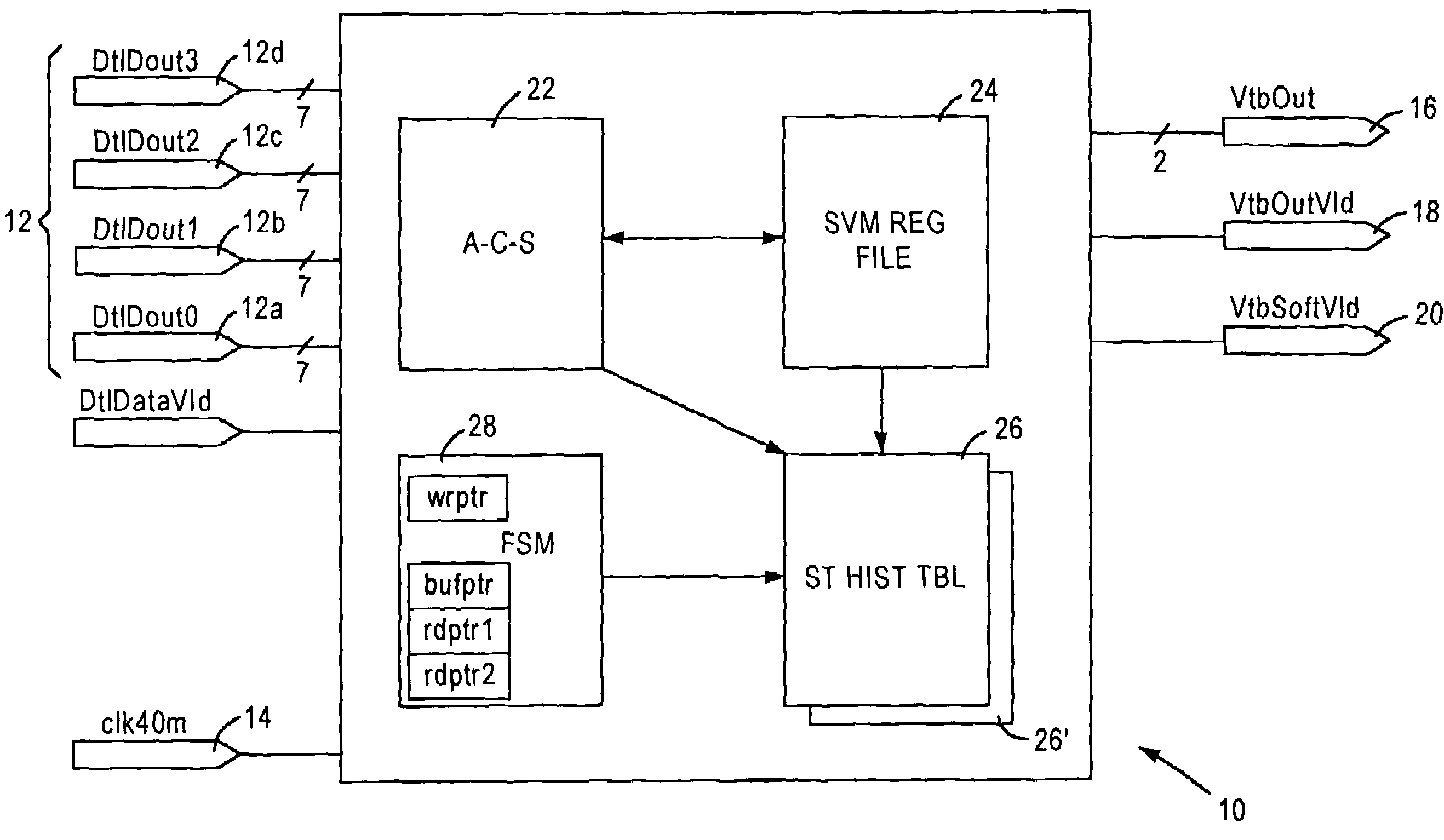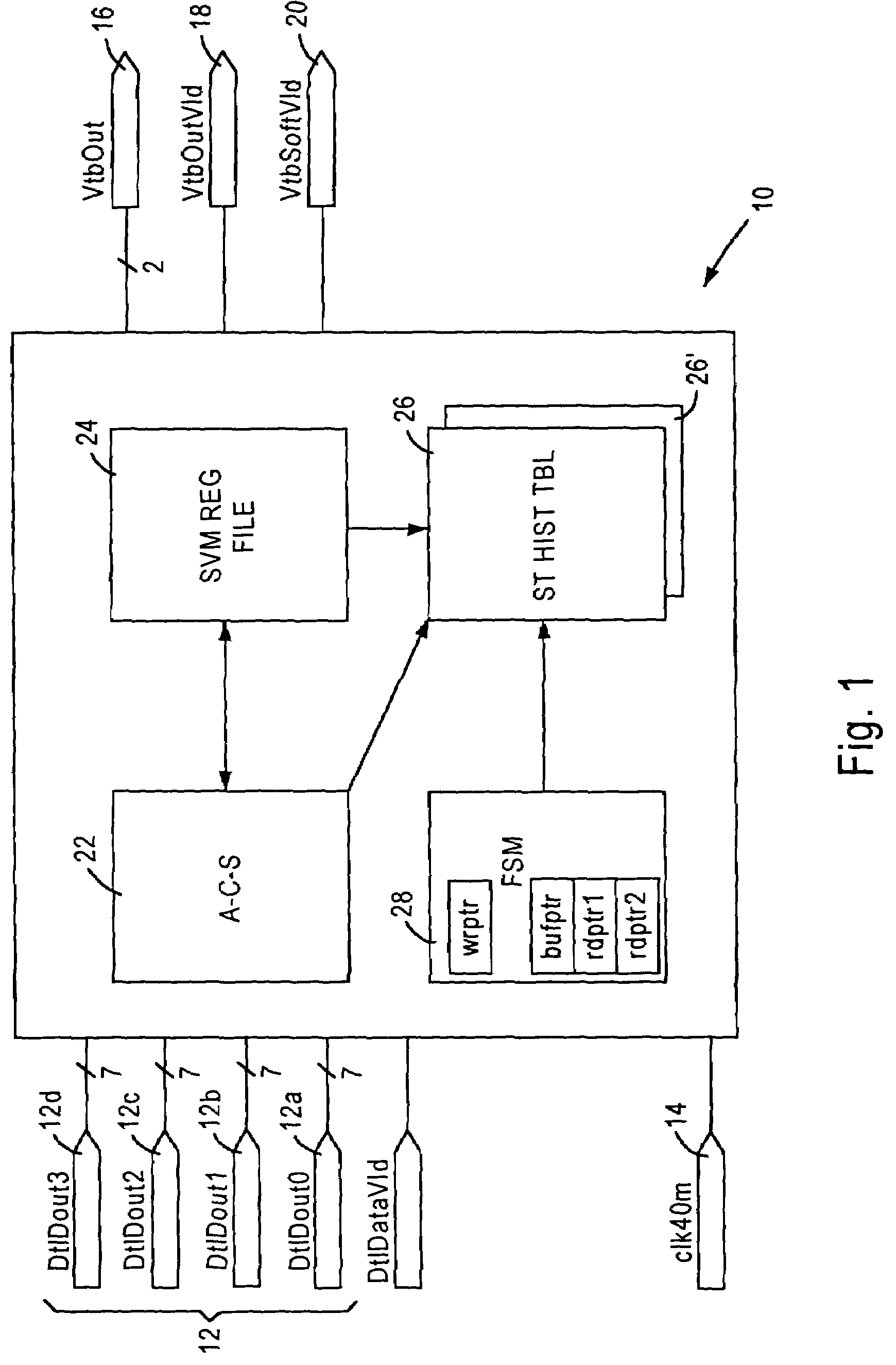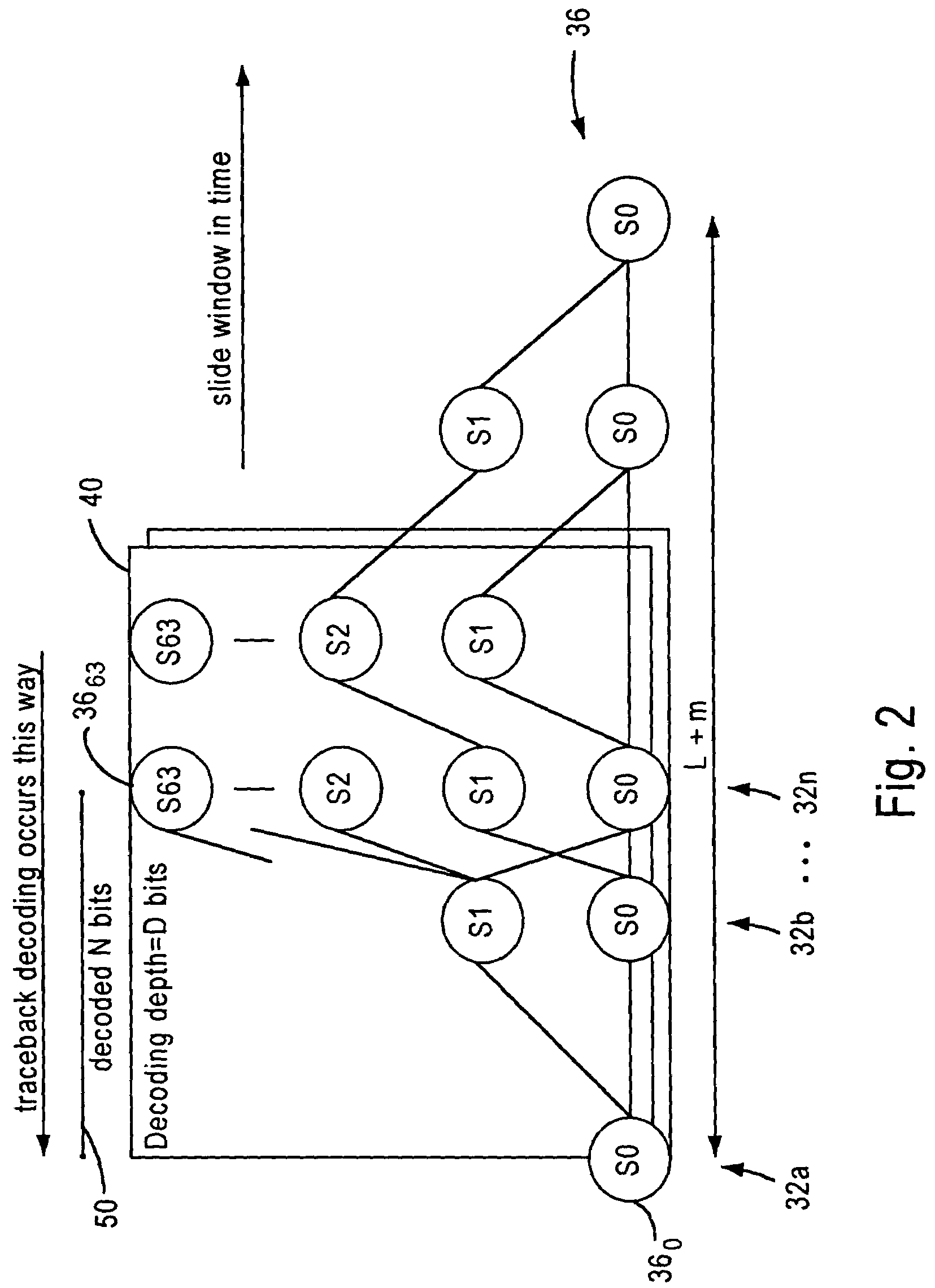Viterbi decoder utilizing partial backtracing
a technology of partial backtracing and decoding window, which is applied in the field of implementation of viterbi decoders, can solve the problems of large number of computations required over the entire length of the convolutional encoded data stream, and insufficient use of traceback decoding window depth k5 to decode a pair of convolutional encoded data bits for providing an economical implementation of an
- Summary
- Abstract
- Description
- Claims
- Application Information
AI Technical Summary
Benefits of technology
Problems solved by technology
Method used
Image
Examples
Embodiment Construction
[0031]FIG. 1 is a diagram illustrating a Viterbi decoder 10 for use in a receiver module of an IEEE 802.11 Orthogonal Frequency Division Multiplexing (OFDM) transceiver, according to an embodiment of the present invention. The Viterbi decoder 10 is configured for decoding deinterleaved data 12 from a deinterleaver (not shown) into decoded data, in accordance with the IEEE 802.11 specification.
[0032]In particular, the Viterbi decoder 10 is configured for receiving encoded bit pairs as 7-bit soft metric values, generated by slicer circuits internal to the OFDM transceiver, where signed integer values are represented in 7-bit notation (1-bit sign and 6-bit value) instead of binary. The 7-bit soft metric values 12a, 12b, 12c, and 12d represent encoded bit pairs at time instances t1 and t2. The Viterbi decoder 10 is driven by a 40 MHz clock 14, and outputs decoded bit pairs via an output path 16, with a data valid strobe 18 and a decoding valid strobe 20 used to identify the validity of ...
PUM
 Login to View More
Login to View More Abstract
Description
Claims
Application Information
 Login to View More
Login to View More - R&D
- Intellectual Property
- Life Sciences
- Materials
- Tech Scout
- Unparalleled Data Quality
- Higher Quality Content
- 60% Fewer Hallucinations
Browse by: Latest US Patents, China's latest patents, Technical Efficacy Thesaurus, Application Domain, Technology Topic, Popular Technical Reports.
© 2025 PatSnap. All rights reserved.Legal|Privacy policy|Modern Slavery Act Transparency Statement|Sitemap|About US| Contact US: help@patsnap.com



